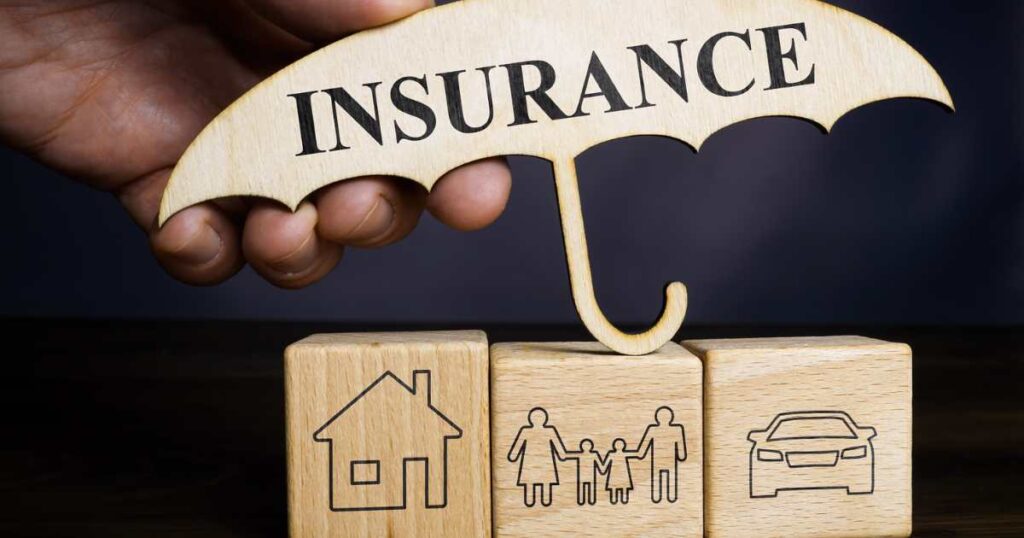EMERGENCY ACTION PLAN (EAP)
Acadia Insurance | 2017 Hurricane Bulletin
Setting up an Emergency Action Plan helps aid and organize employer and employee procedures during workplace emergencies. Well-developed emergency plans and appropriate employee training, in which employees understand their roles and responsibilities within the plan, can result in fewer and less severe employee injuries and less structural damage to the site during emergencies.
Every business should have an emergency plan. It can save lives, company assets, and your ENTIRE business.
BEFORE THE STORM
Set Up a “Go Box” for Critical Papers
Use a plastic, waterproof container that can be used to hold and carry essential business documents and useful forms including:
– A list of all employees, key customers and clients along with their phone numbers.
– Insurance policies and agent contact information.
– Back‐up electronic data.
– Equipment, computer software/hardware and furniture inventories.
– A list of emergency vendors, like plumbers and restoration contractors.
– Copies of essential business policies, plans and agreements.
– Photographs of the business, both inside and out.
Download Newsletter Now
Business Owners Hurricane Safety Checklist
- Business Insurance
Related Post
As healthcare costs continue to rise, employers are exploring alternatives to traditional fully insured health plans. Two of the most powerful options—level-funded and self-funded health plans—promise greater cost control, plan flexibility, and the potential for meaningful savings. While these models share similarities, they differ in structure, risk tolerance, and financial predictability. Understanding the nuances can help employers choose the right strategy for their workforce and budget.
What Is Self-Funding?
In a self-funded health plan, the employer takes on the financial risk of providing healthcare benefits. Instead of paying a fixed monthly premium to an insurance carrier, the employer pays medical claims as they occur. This approach can offer significant advantages:
- Greater flexibility: Employers can customize benefits, networks, wellness programs, and cost-containment strategies.
- Transparency: Reporting provides deeper insight into claims drivers, chronic conditions, and utilization patterns.
- Cost savings: When claims run lower than expected, the employer keeps the savings.
However, self-funding also involves higher financial exposure. Large or unexpected claims can create volatility. To mitigate this risk, most employers purchase stop-loss insurance, which caps exposure at both the individual and group levels.
Self-funding is especially attractive to mid-size and large employers with stable employee populations and predictable claims.
What Is Level-Funding?
Level-funded plans blend the financial predictability of fully insured arrangements with the savings potential of self-funding. Employers pay a fixed monthly amount—“the level”—which is divided into three components:
- Claims Fund – money set aside to pay employee healthcare claims
- Administrative Fees – for plan administration, networks, and customer service
- Stop-Loss Coverage – protection against high-cost or catastrophic claims
At the end of the year, if claims are lower than expected, employers often receive a refund or credit of unused funds. If claims exceed projections, stop-loss kicks in to protect the employer.
Level-funded plans are ideal for small to mid-size employers who want more control and potential savings but are not ready for the full financial responsibility of self-funding.
Key Differences to Consider
1. Financial Risk
-
Self-Funded: Employer assumes higher risk and greater claim volatility.
-
Level-Funded: Monthly costs are fixed; risk is capped by stop-loss insurance.
2. Cash Flow
-
Self-Funded: Cash flow fluctuates based on claims activity.
-
Level-Funded: Predictable monthly payments make budgeting easier.
3. Savings Opportunity
-
Self-Funded: Potential for maximum savings if claims are well-managed.
-
Level-Funded: Savings potential still strong but typically lower than full self-funding.
4. Compliance
Both plans avoid many ACA community-rating restrictions and come with ERISA oversight, but reporting requirements may differ based on size and structure.

Which Option Is Right for Your Business?
The best choice depends on your organization’s size, risk tolerance, financial stability, and long-term benefits strategy.
- Choose self-funding if you have a larger workforce, access to analytics and wellness tools, and the desire to own and manage your claims experience.
- Choose level-funding if you want predictable costs with upside potential and a gradual transition toward more strategic benefit financing.
Both models can provide meaningful savings and stronger plan control—especially when paired with data analytics, proactive risk management, and expert guidance.
No matter which funding strategy an employer chooses, the Employee Benefits team at Tooher-Ferraris Insurance Group provides the expertise, tools, and guidance to make the decision smarter—and to manage it confidently moving forward. Our team evaluates your unique workforce, analyzes claims and risk patterns, models financial scenarios, and compares level-funded and self-funded options so you understand the true cost and long-term impact of each. Once your plan is in place, we support you with ongoing compliance oversight, cost-containment strategies, carrier negotiations, employee education, and real-time data insights to ensure your benefits program stays efficient, sustainable, and aligned with your business goals. With Tooher-Ferraris, you get more than a benefits plan—you get a strategic partner committed to your success.
When life throws unexpected challenges your way, your standard home and auto insurance might not be enough to cover all potential risks.
That’s where umbrella insurance steps in — offering an extra layer of financial protection. At Tooher-Ferraris Insurance Group, we help individuals and businesses find the right umbrella insurance policy that fits their specific coverage needs and provides peace of mind.
What Is Umbrella Insurance?
Umbrella insurance is a type of personal liability coverage that extends beyond your existing auto, homeowners, or renters insurance policies. It helps protect you when the limits of your primary policies are exceeded, covering things like bodily injury, property damage, and certain legal costs.
For example, if you’re found responsible for a major car accident or a serious injury on your property, your standard policy might not cover the entire claim amount. Umbrella insurance fills that gap, ensuring you’re not paying the remaining costs out of pocket.

What Does Umbrella Insurance Cover?
The right umbrella insurance policy provides broad protection for various situations, including:
- Bodily Injury Liability: Covers medical expenses and legal fees if someone is injured due to your actions.
- Property Damage Liability: Protects you if you accidentally damage another person’s property.
- Personal Liability: Extends coverage for libel, slander, or defamation claims.
- Legal Defense Costs: Covers attorney fees and court costs, even if a lawsuit is groundless.
Umbrella insurance does not typically cover your own property or personal injuries, but it safeguards your assets from large claims that could otherwise be financially devastating.
When Should You Consider Umbrella Insurance?
You should consider umbrella insurance if you:
- Own property or have significant savings or investments
- Have young drivers in your household
- Frequently host guests or events at your home
- Operate a small business or rental property
- Want added protection against potential lawsuits
Essentially, if you have assets to protect or risks that could expose you to liability, investing in the right umbrella insurance policy is a smart move.
How to Determine the Right Level of Coverage
Determining the right umbrella insurance policy starts with evaluating your total assets and potential risks. Consider your net worth, lifestyle, and liability exposure. Most policies start at $1 million in coverage and can be increased in increments, depending on your situation.
A professional insurance advisor can help assess your existing coverage limits, identify gaps, and recommend the right amount of umbrella protection to ensure you’re fully safeguarded.
Protect Your Future with Tooher-Ferraris Insurance Group
The right umbrella insurance policy can make all the difference when it comes to protecting your financial future. Whether you need coverage for personal or business purposes, Tooher-Ferraris Insurance Group offers comprehensive insurance services tailored to your needs.
Contact Tooher-Ferraris Insurance Group today to learn how we can help you find the right umbrella insurance policy and ensure complete peace of mind.
When temperatures drop, keeping your home warm and energy-efficient becomes a top priority. The challenge is finding ways to save money on heating the home without increasing fire risks or costly insurance claims. Safe heating practices, proper maintenance, and adequate coverage can go a long way in protecting both your comfort and your finances.
1. Maintain and Inspect Heating Systems Regularly
Before winter arrives in full force, schedule a professional inspection of your furnace, boiler, or heat pump. A certified technician can identify leaks, faulty wiring, or worn-out parts that may lead to inefficiency or hazards. Regular maintenance not only improves performance but also helps prevent claims related to fire or smoke damage under your homeowners’ insurance policies.
2. Improve Home Efficiency to Reduce Heating Costs
Simple home upgrades can dramatically increase energy efficiency. Add weather stripping to doors and windows, seal air leaks, and ensure adequate insulation in your attic. Using a programmable thermostat can also lower energy bills by automatically adjusting temperatures while you sleep or are away.
For additional protection, consider equipment breakdown insurance, which covers costly repairs or replacements for systems that unexpectedly fail.
3. Prevent Carbon Monoxide and Fire Hazards
Carbon monoxide is a silent danger during the winter months. Install detectors in sleeping areas and near fuel-burning appliances. Clean your chimney annually to prevent blockages that could lead to fire. Homeowners with wood-burning stoves should dispose of ashes safely in metal containers.
Umbrella insurance provides additional liability coverage beyond standard homeowners or auto policies, offering broader protection if an incident causes injury or property damage. Similarly, if you own rental properties or multifamily housing, general liability insurance and commercial property insurance can safeguard your investments against heating-related mishaps.

At Tooher-Ferraris Insurance Group, we understand the importance of safeguarding your home and loved ones during winter. For over 90 years, we’ve helped families find the right homeowners’ insurance policies, umbrella insurance, and general liability insurance solutions to stay protected.
Winter brings challenges—but with us, you’re never unprepared. Let our team customize your coverage today. Contact Tooher-Ferraris Insurance Group to get started.






